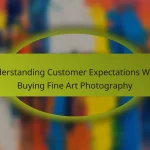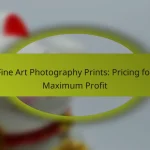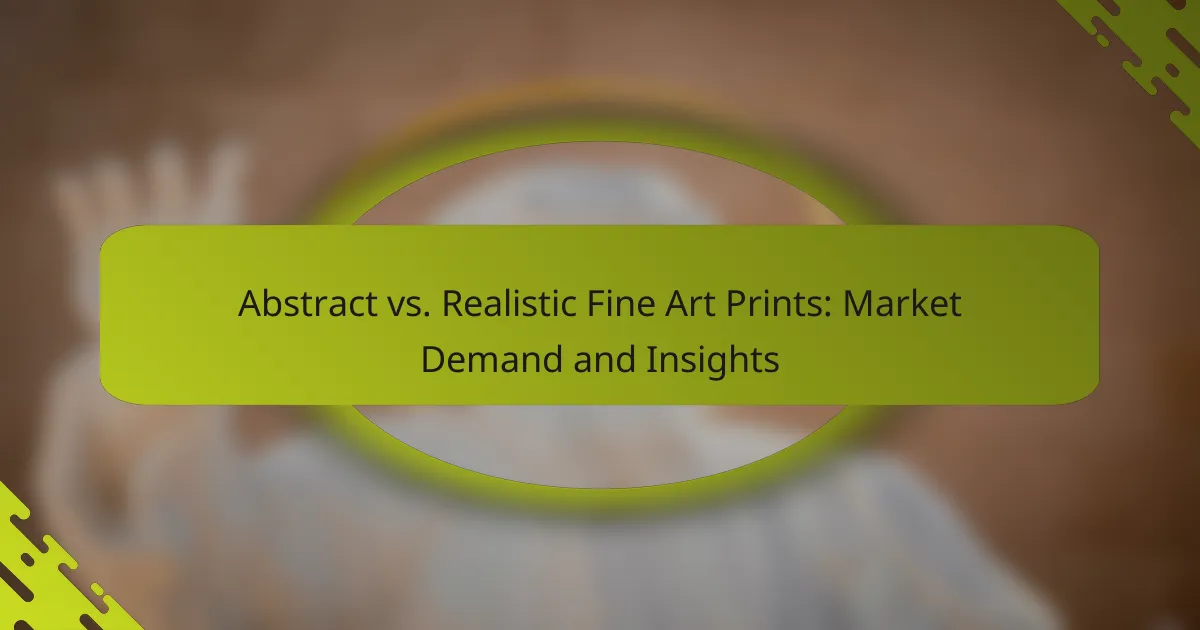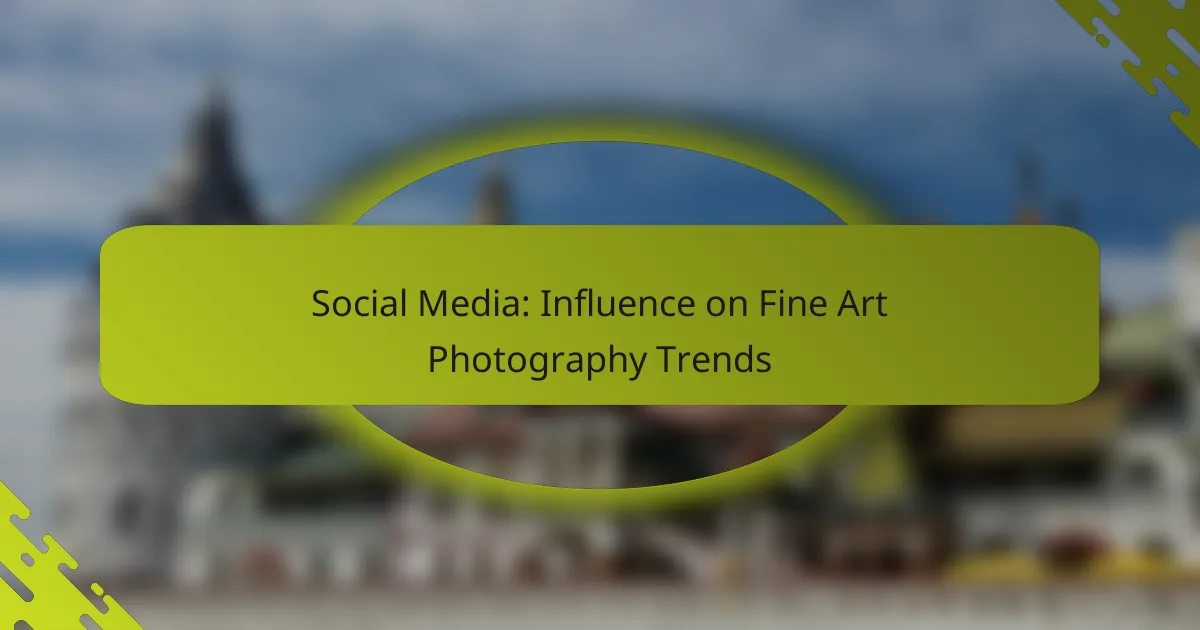The fine art print market in the US is undergoing significant changes, with a notable shift towards abstract art alongside a sustained interest in realistic prints. This evolving landscape is driven by consumer preferences that reflect emotional connections and aesthetic compatibility with home decor, as well as the convenience of online purchasing. Understanding these trends can provide valuable insights for both collectors and artists navigating this dynamic market.
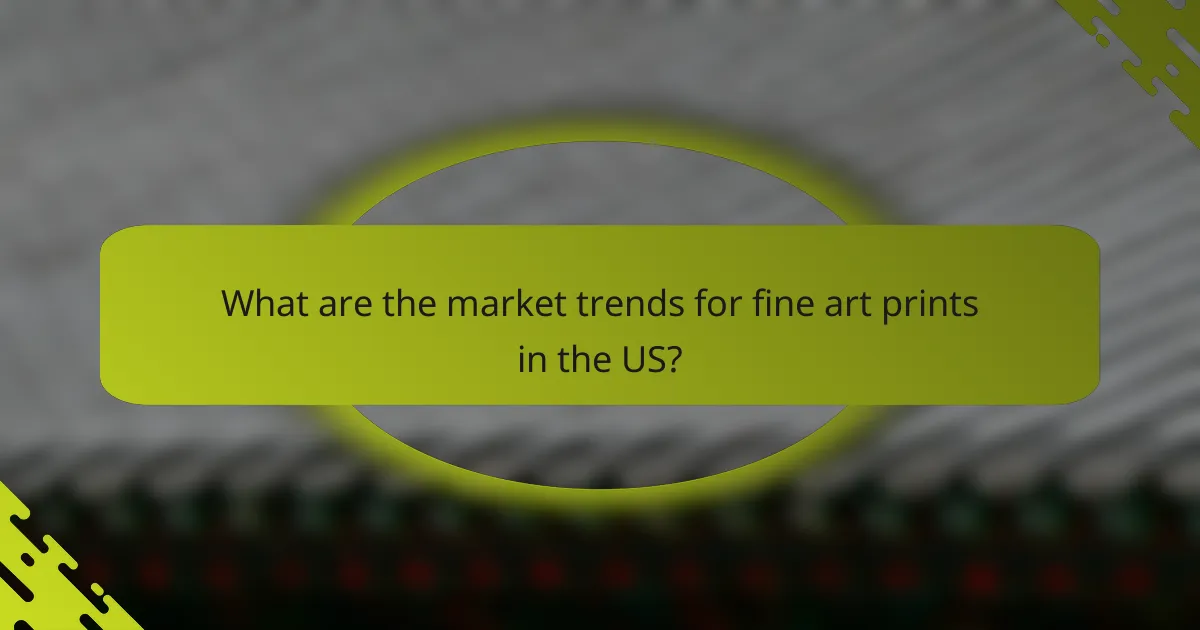
What are the market trends for fine art prints in the US?
The market for fine art prints in the US is experiencing notable shifts, particularly with a growing preference for abstract art and a rising interest in realistic prints. Additionally, more consumers are opting for online purchasing, reshaping how art is bought and sold.
Growing demand for abstract art
Abstract art prints are increasingly popular among collectors and interior decorators, driven by their versatility and ability to complement various design styles. Many buyers appreciate the emotional and interpretive nature of abstract works, which can evoke personal connections.
Art fairs and exhibitions often showcase abstract pieces, leading to a surge in demand. Prices for high-quality abstract prints can range from a few hundred to several thousand dollars, depending on the artist’s reputation and the print’s uniqueness.
Increased interest in realistic prints
Realistic fine art prints are gaining traction as consumers seek artworks that depict familiar subjects with precision. This trend is particularly evident in home decor, where realistic prints can enhance the aesthetic appeal of living spaces.
Artists specializing in realism often command higher prices, especially if their works feature intricate details or are limited editions. Collectors might find realistic prints priced from several hundred to tens of thousands of dollars, influenced by the artist’s prominence and the print’s quality.
Shift towards online purchasing
The fine art print market is increasingly moving online, with platforms offering a wide selection of both abstract and realistic works. This shift allows buyers to easily compare prices, styles, and artists from the comfort of their homes.
Online galleries and marketplaces often provide detailed descriptions and high-resolution images, helping consumers make informed decisions. However, buyers should be cautious of potential shipping costs and ensure they purchase from reputable sources to avoid counterfeit prints.
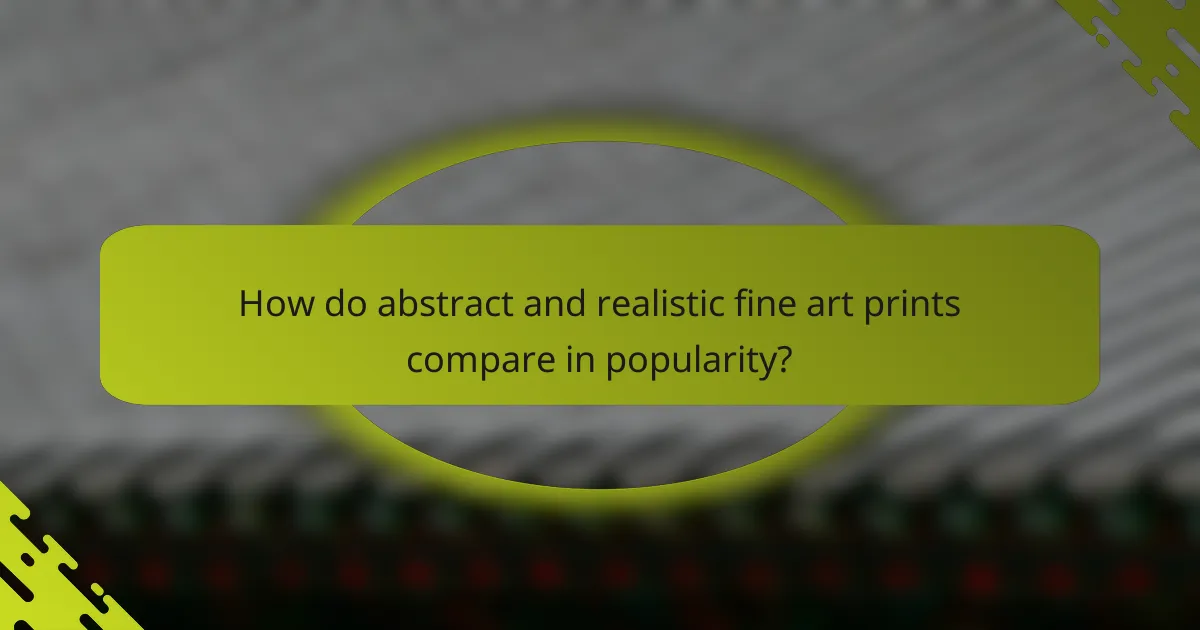
How do abstract and realistic fine art prints compare in popularity?
Abstract and realistic fine art prints have distinct popularity trends influenced by current tastes and collector demographics. Abstract prints often resonate with modern aesthetics, while realistic prints tend to attract traditional collectors who appreciate detailed representations.
Abstract prints appeal to modern aesthetics
Abstract prints are increasingly favored in contemporary decor, aligning with minimalist and avant-garde styles. Their ability to evoke emotions through color and form makes them popular among younger buyers and interior designers looking for statement pieces.
In urban markets, the demand for abstract art can be seen in galleries and online platforms, where prices can range from a few hundred to several thousand dollars depending on the artist’s reputation and the print’s uniqueness.
Realistic prints attract traditional collectors
Realistic prints hold a strong appeal for traditional art collectors who value craftsmanship and lifelike representation. These prints often depict landscapes, portraits, or still lifes, attracting buyers who appreciate the skill involved in creating detailed works.
In established art markets, realistic prints can command higher prices, often starting in the low thousands and reaching significantly more for works by renowned artists. Collectors often seek provenance and quality, making this genre a stable investment.
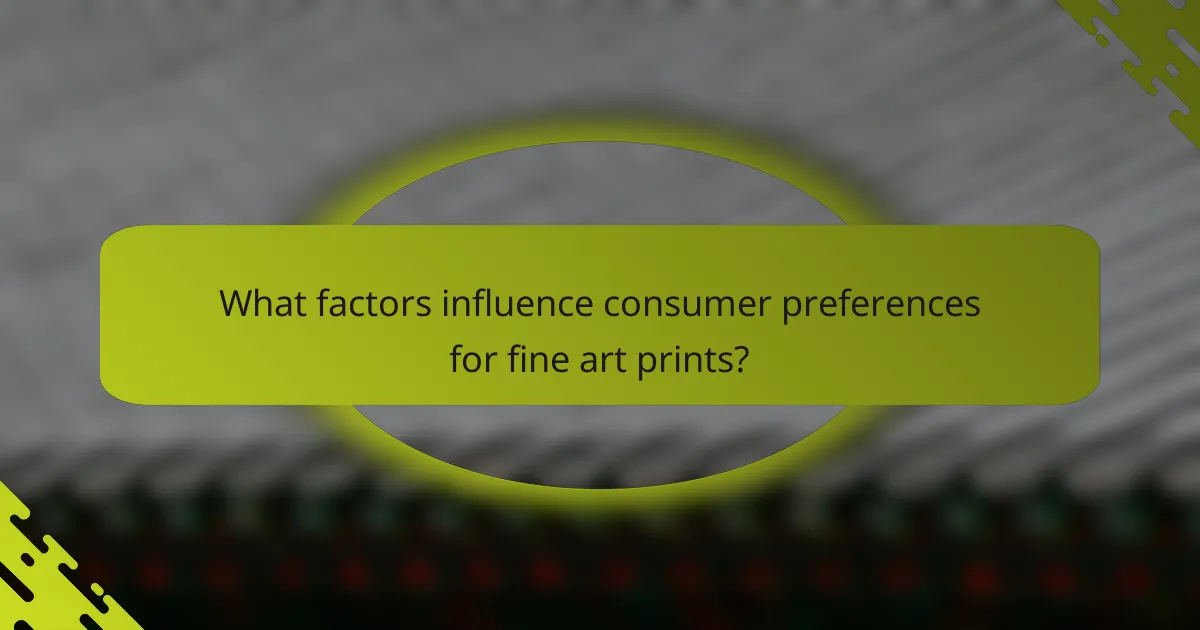
What factors influence consumer preferences for fine art prints?
Consumer preferences for fine art prints are influenced by emotional connections, compatibility with room decor, and the reputation of the artist. Understanding these factors can help both buyers and sellers navigate the market effectively.
Emotional connection to artwork
Emotional connection plays a crucial role in the selection of fine art prints. Buyers often seek pieces that resonate with their personal experiences or evoke specific feelings, such as joy, nostalgia, or tranquility. This connection can significantly enhance the perceived value of the artwork.
For instance, a print that reminds someone of a cherished memory or a beloved place may be prioritized over others, regardless of style or price. Artists who successfully convey emotions in their work often see higher demand.
Room decor compatibility
Compatibility with existing room decor is another key factor influencing consumer choices. Buyers typically look for artwork that complements their interior design style, whether it be modern, traditional, or eclectic. Colors, themes, and sizes must align with the overall aesthetic of the space.
For example, a vibrant abstract print might suit a contemporary living room, while a serene landscape could be ideal for a calming bedroom atmosphere. Understanding color palettes and design trends can help consumers make informed decisions.
Artist reputation and brand
The reputation of an artist significantly impacts consumer preferences for fine art prints. Well-known artists often command higher prices and attract more buyers due to their established credibility and perceived value. Collectors may prefer prints from artists with a strong track record or those who have exhibited in reputable galleries.
Emerging artists can also gain traction by building a personal brand and engaging with their audience through social media or art fairs. Buyers may be more inclined to invest in prints from artists they feel a connection to or who have a unique story to tell.
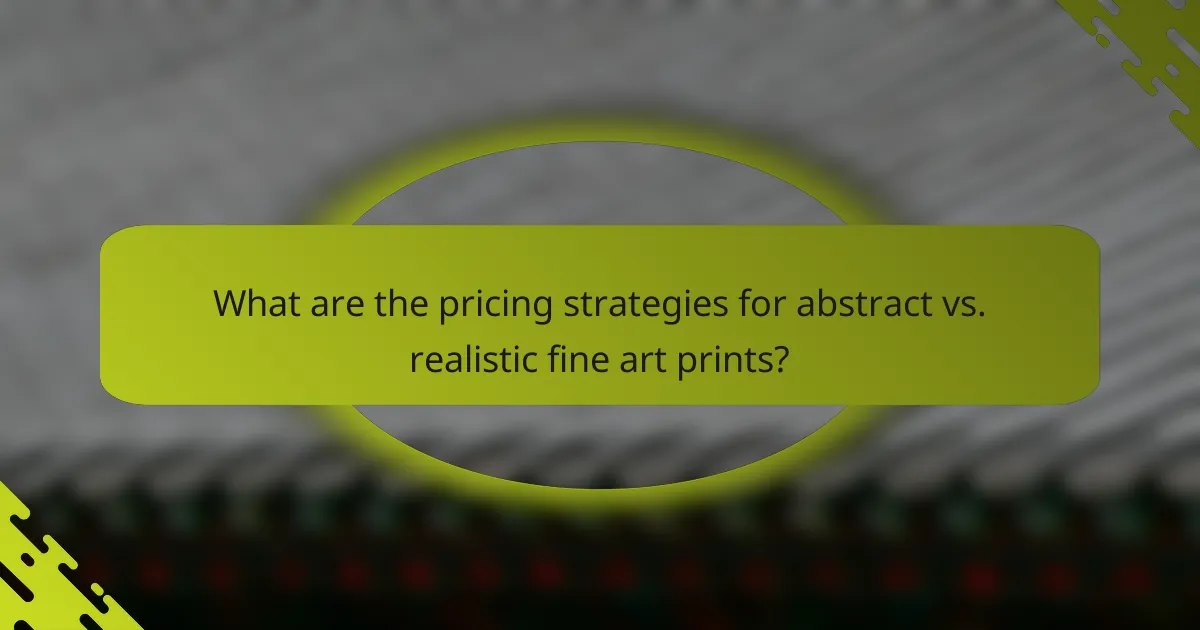
What are the pricing strategies for abstract vs. realistic fine art prints?
Pricing strategies for abstract and realistic fine art prints vary significantly based on factors such as artist recognition and market demand. Understanding these elements can help both buyers and sellers navigate the art market effectively.
Pricing based on artist recognition
The reputation of an artist plays a crucial role in determining the price of their prints. Established artists with a strong following can command higher prices, often in the hundreds to thousands of USD, while emerging artists may price their work more affordably, typically in the lower hundreds or even tens of USD.
For example, a limited edition print by a well-known abstract artist may sell for $1,500, whereas a similar print by a lesser-known artist might be priced around $300. Collectors often invest in recognized artists, expecting their work to appreciate over time.
Market demand affecting price points
Market demand significantly influences the pricing of both abstract and realistic fine art prints. When a particular style or artist gains popularity, prices can increase rapidly due to heightened interest. This is especially true in art fairs or online marketplaces where trends can shift quickly.
For instance, during a surge in demand for abstract art, prices for popular pieces may rise by 20-30% within a year. Conversely, if interest wanes, prices may stabilize or even drop. Buyers should monitor market trends and artist exhibitions to make informed purchasing decisions.
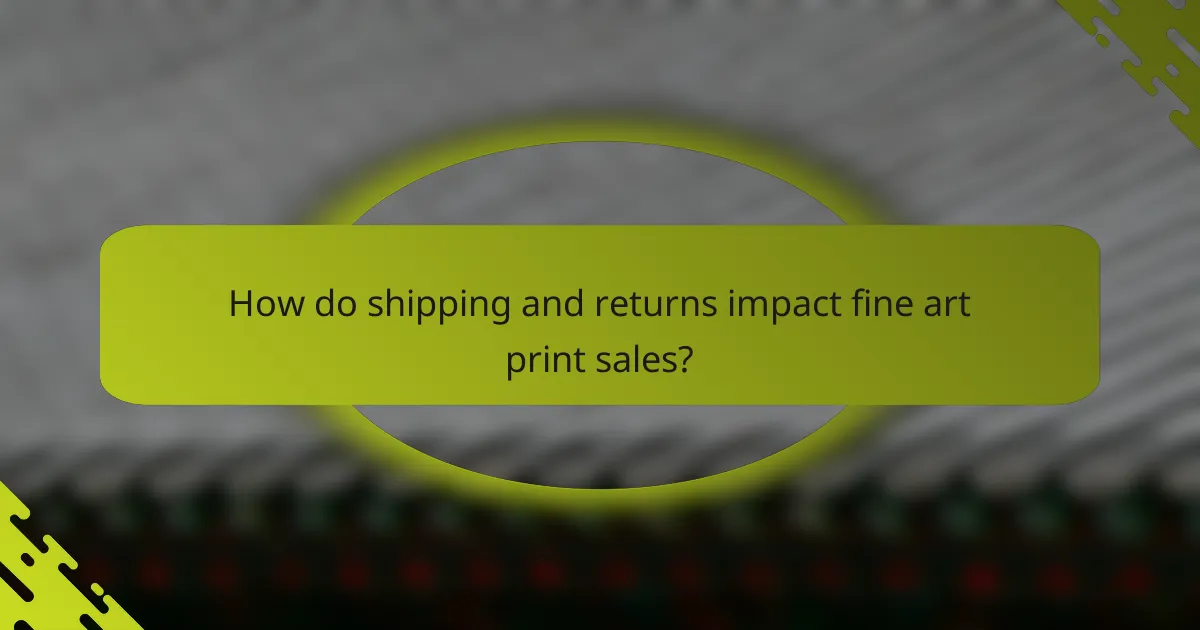
How do shipping and returns impact fine art print sales?
Shipping and return policies significantly influence fine art print sales by affecting customer satisfaction and purchase decisions. High shipping costs or unfavorable return policies can deter potential buyers, while reasonable rates and flexible returns can enhance confidence and encourage purchases.
Shipping costs vary by print size
Shipping costs for fine art prints often depend on the size and weight of the item. Larger prints typically incur higher shipping fees due to increased packaging and handling requirements. For example, a small print may cost around $10 to ship, while a large canvas could exceed $50.
Artists and sellers should consider offering tiered shipping rates based on print sizes to provide transparency and attract buyers. Additionally, free shipping thresholds can incentivize customers to purchase multiple items, increasing overall sales.
Return policies influence buyer confidence
Return policies play a crucial role in shaping buyer confidence in fine art print purchases. A clear and generous return policy can reassure customers, making them more likely to complete a purchase. For instance, offering a 30-day return window can significantly enhance customer trust.
Sellers should communicate their return policies clearly on their websites, highlighting any conditions or costs associated with returns. Avoiding restocking fees and providing prepaid return labels can further encourage buyers to take the plunge and invest in art prints.
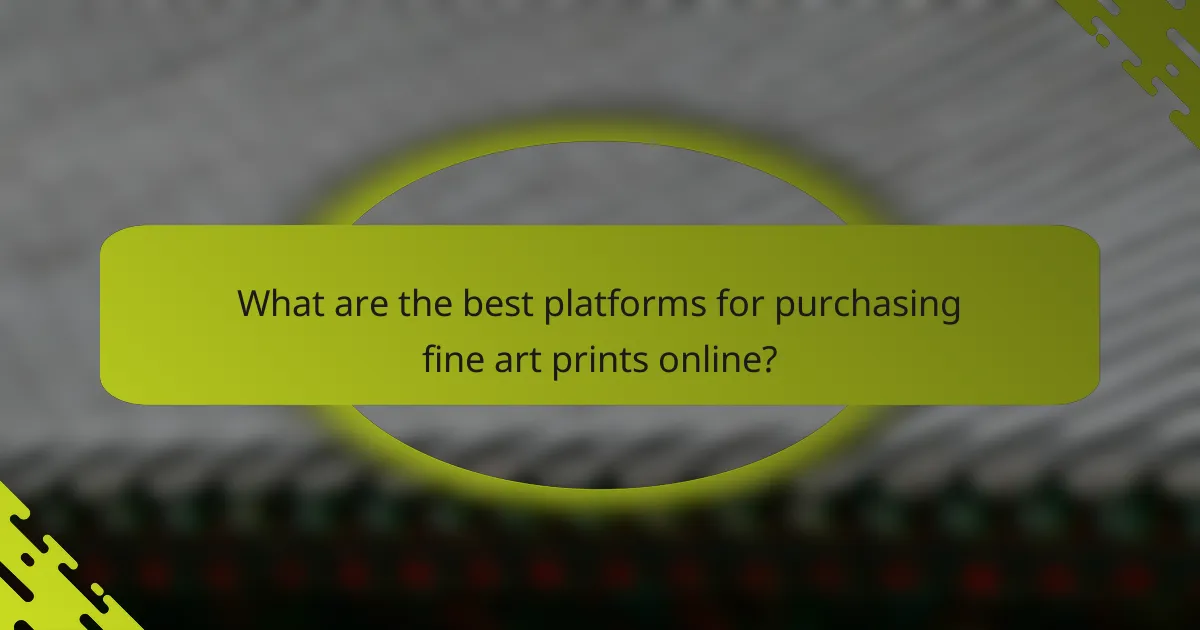
What are the best platforms for purchasing fine art prints online?
The best platforms for purchasing fine art prints online include specialized marketplaces that offer a wide range of options and direct connections to artists. These platforms cater to different tastes and budgets, making it easier to find the perfect piece for your collection.
Saatchi Art for diverse selections
Saatchi Art is renowned for its extensive collection of fine art prints, featuring works from artists around the globe. The platform allows users to browse by style, medium, and price, making it easy to find art that fits personal preferences.
When purchasing from Saatchi Art, consider the variety of print types available, including limited editions and open editions. Prices can range from affordable options in the low hundreds to high-end pieces that may cost thousands.
Artfinder for unique artist connections
Artfinder focuses on connecting buyers directly with independent artists, offering a more personalized shopping experience. This platform showcases unique artworks, often with a story behind each piece, which can enhance the value of your purchase.
When using Artfinder, look for the option to filter by artist location, style, or medium. Prices vary widely, typically starting from around $50 for smaller prints to several hundred for larger, more intricate works. Engaging with artists directly can also lead to custom commissions, providing a unique addition to your collection.
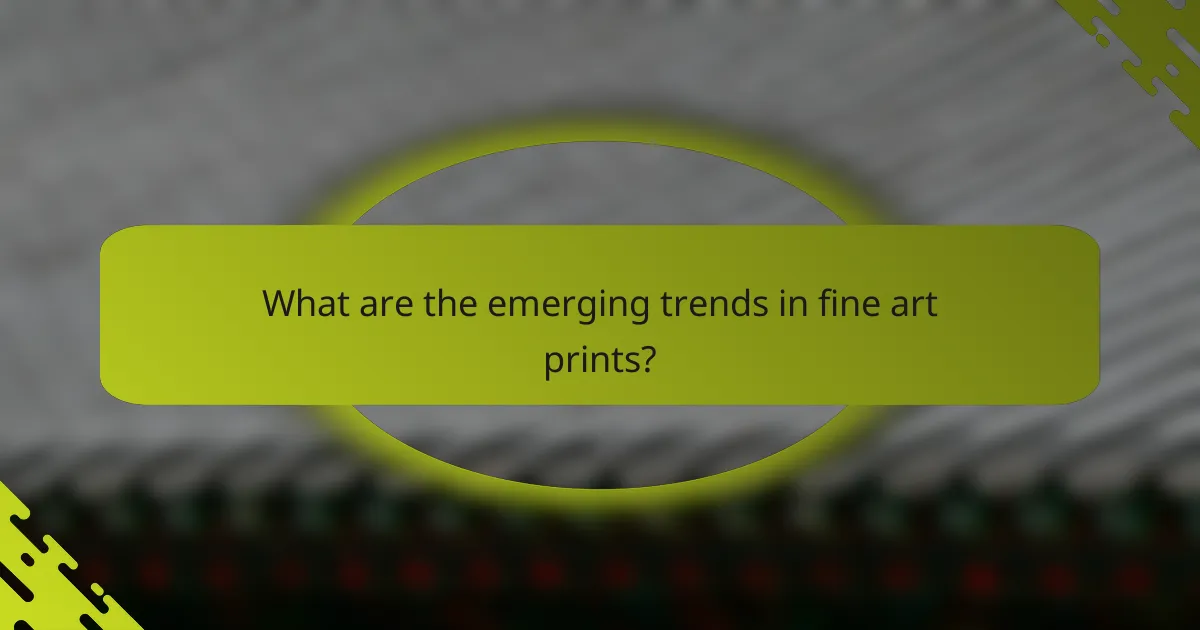
What are the emerging trends in fine art prints?
Emerging trends in fine art prints reflect a growing interest in sustainability, technology, and personalization. Artists and consumers are increasingly prioritizing eco-friendly materials and innovative printing techniques, which enhance the aesthetic appeal and marketability of prints.
Increased use of sustainable materials
The fine art print market is seeing a significant shift towards sustainable materials, driven by consumer demand for eco-friendly products. Artists are opting for papers made from recycled fibers and inks derived from natural sources, which reduce environmental impact.
Using sustainable materials not only appeals to environmentally conscious buyers but can also enhance the perceived value of the artwork. For instance, prints produced on organic cotton paper or bamboo can command higher prices due to their unique qualities and eco-friendly credentials.
Artists should consider sourcing materials from certified suppliers who adhere to environmental standards. This ensures that the materials used in fine art prints are not only sustainable but also of high quality, which is essential for maintaining the integrity of the artwork.


